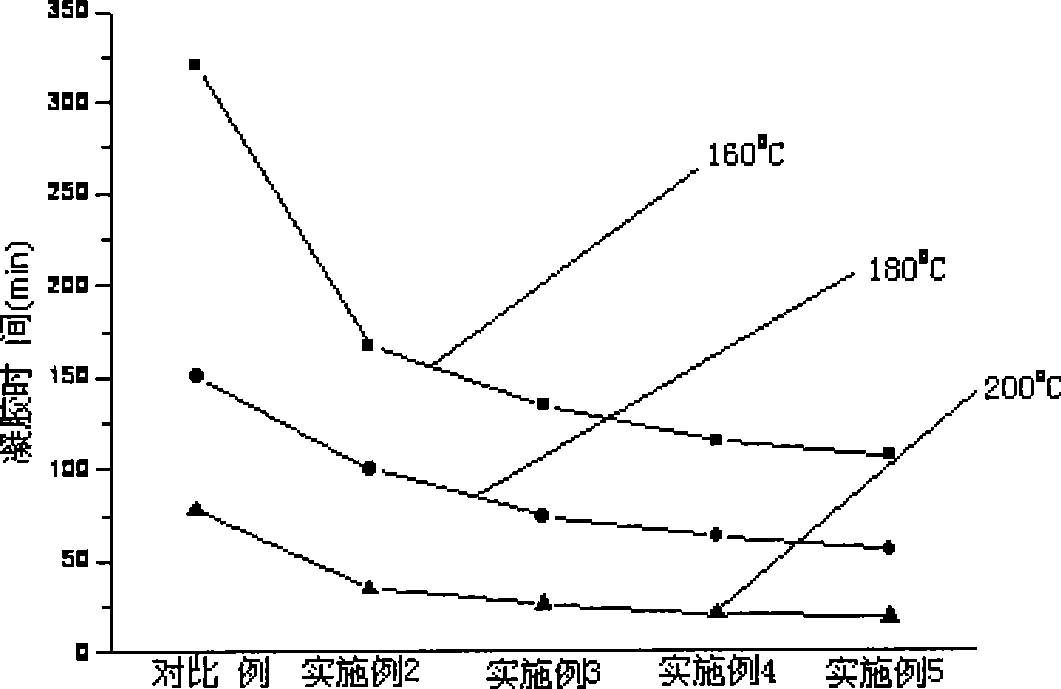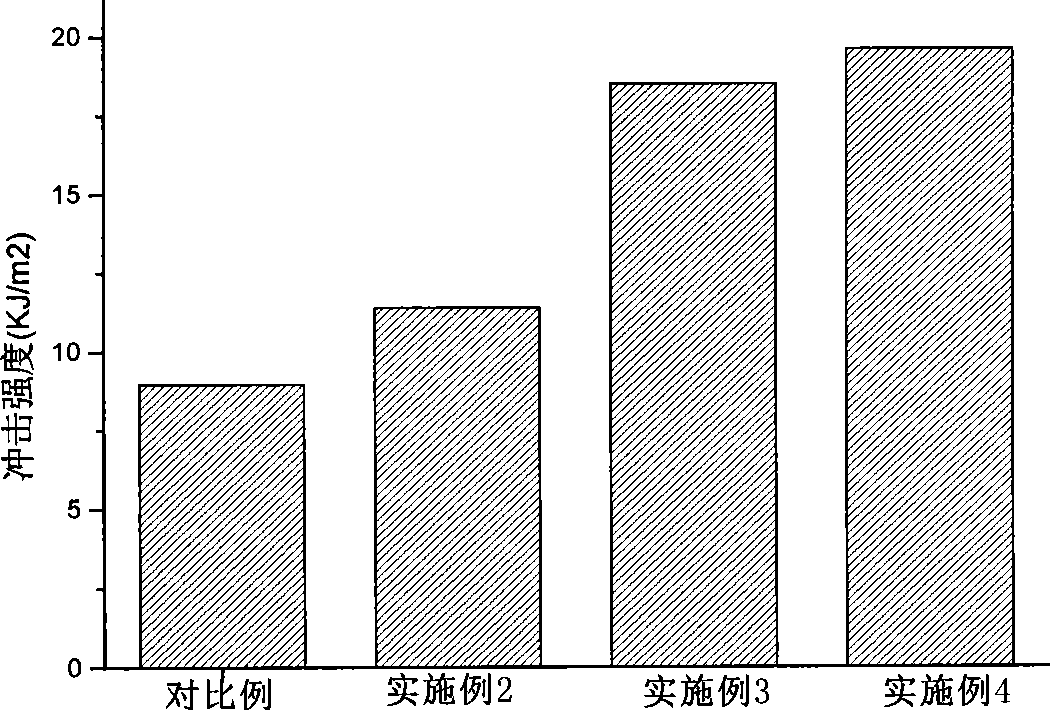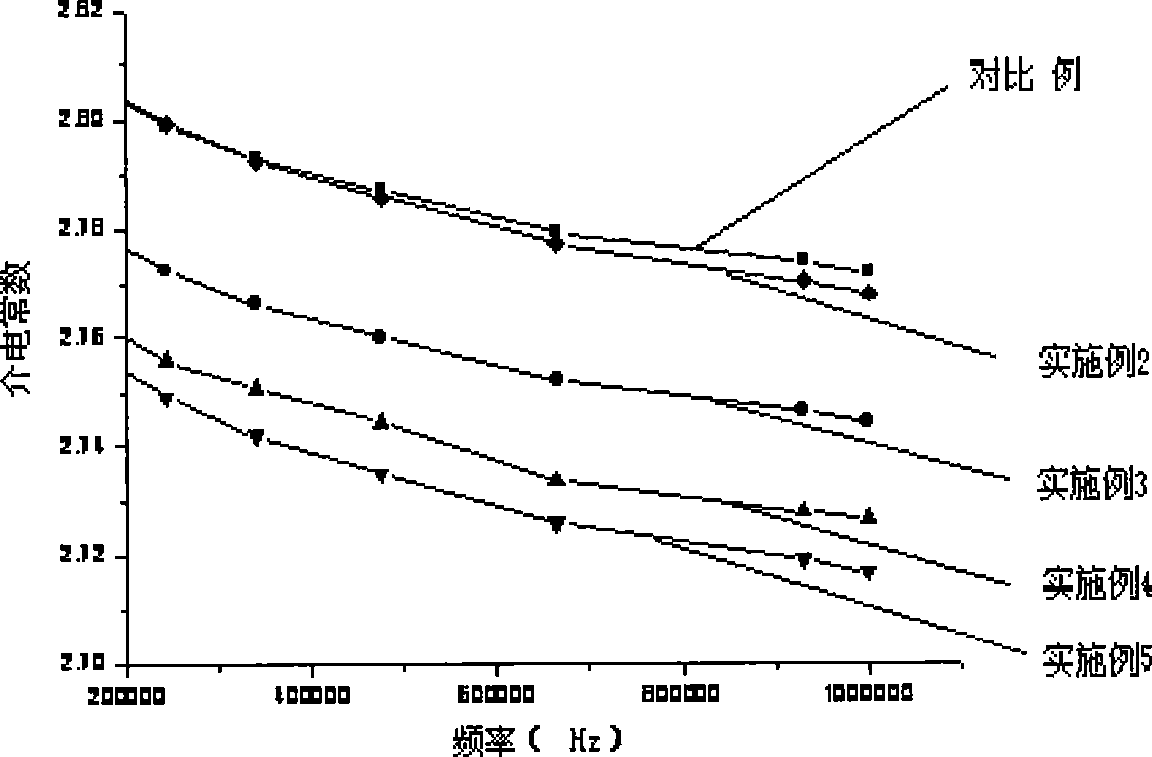Modified ethylene rhodanate resin and preparation thereof
A cyanate ester resin and cyanate ester technology, which is applied in the field of modified cyanate resin and its preparation, can solve the problems of increased brittleness and poor processability of CE resin, and achieve excellent dielectric properties and heat and humidity resistance, High toughness, outstanding thermal stability effect
- Summary
- Abstract
- Description
- Claims
- Application Information
AI Technical Summary
Problems solved by technology
Method used
Image
Examples
Embodiment 1
[0020] Weigh 2.52g of distilled water and 22.4g of γ-methacryloxypropyltrimethoxysilane KH570 and mix evenly, then slowly add HCl with a concentration of 38% dropwise at room temperature and under magnetic stirring until the pH of the solution is 1.8 . 15 minutes after the completion of the dropwise addition, the temperature was raised to 50°C to continue the reaction for 5 hours. After the reaction was completed, it was dried in vacuum for 4 hours, and the methanol was evaporated to obtain a transparent and viscous hyperbranched polysiloxane with double bonds as terminal groups.
[0021] Weigh 1 g of the above hyperbranched polysiloxane and 100 g of bisphenol A cyanate, and mix them uniformly at 80° C. under stirring conditions to obtain a modified CE resin.
Embodiment 2
[0023] According to the method of Example 1, a hyperbranched polysiloxane with a double bond as an end group was prepared.
[0024] Weigh 5.26g of the above-mentioned hyperbranched polysiloxane and 100g of bisphenol A cyanate, and mix them uniformly at 150°C under stirring conditions to obtain the modified CE resin.
[0025] Pour the obtained modified CE resin into the preheated mold, vacuum defoam at 150°C for 2 hours, and then perform curing and post-treatment according to the processes of 1800C / 2h+2000C / 2h+2200C / 2h and 2400C / 4h respectively , demoulding after natural cooling, that is, the cured modified CE resin is obtained. Typical properties of cured resins are listed in Figure 2 to Figure 5 .
Embodiment 3
[0027] According to the method of Example 1, a hyperbranched polysiloxane with a double bond as an end group was prepared.
[0028] Weigh 11.11g of the above-mentioned hyperbranched polysiloxane and 100g of bisphenol A cyanate, and mix them uniformly at 120°C under stirring conditions to obtain the modified CE resin.
[0029] Pour the obtained modified CE resin into the preheated mold, vacuum defoam at 150°C for 2 hours, and then perform curing and post-treatment according to the processes of 1800C / 2h+2000C / 2h+2200C / 2h and 2400C / 4h respectively , demoulding after natural cooling, that is, the cured modified CE resin is obtained. Typical properties of cured resins are listed in Figure 2 ~ Figure 4 .
PUM
 Login to View More
Login to View More Abstract
Description
Claims
Application Information
 Login to View More
Login to View More - R&D
- Intellectual Property
- Life Sciences
- Materials
- Tech Scout
- Unparalleled Data Quality
- Higher Quality Content
- 60% Fewer Hallucinations
Browse by: Latest US Patents, China's latest patents, Technical Efficacy Thesaurus, Application Domain, Technology Topic, Popular Technical Reports.
© 2025 PatSnap. All rights reserved.Legal|Privacy policy|Modern Slavery Act Transparency Statement|Sitemap|About US| Contact US: help@patsnap.com



